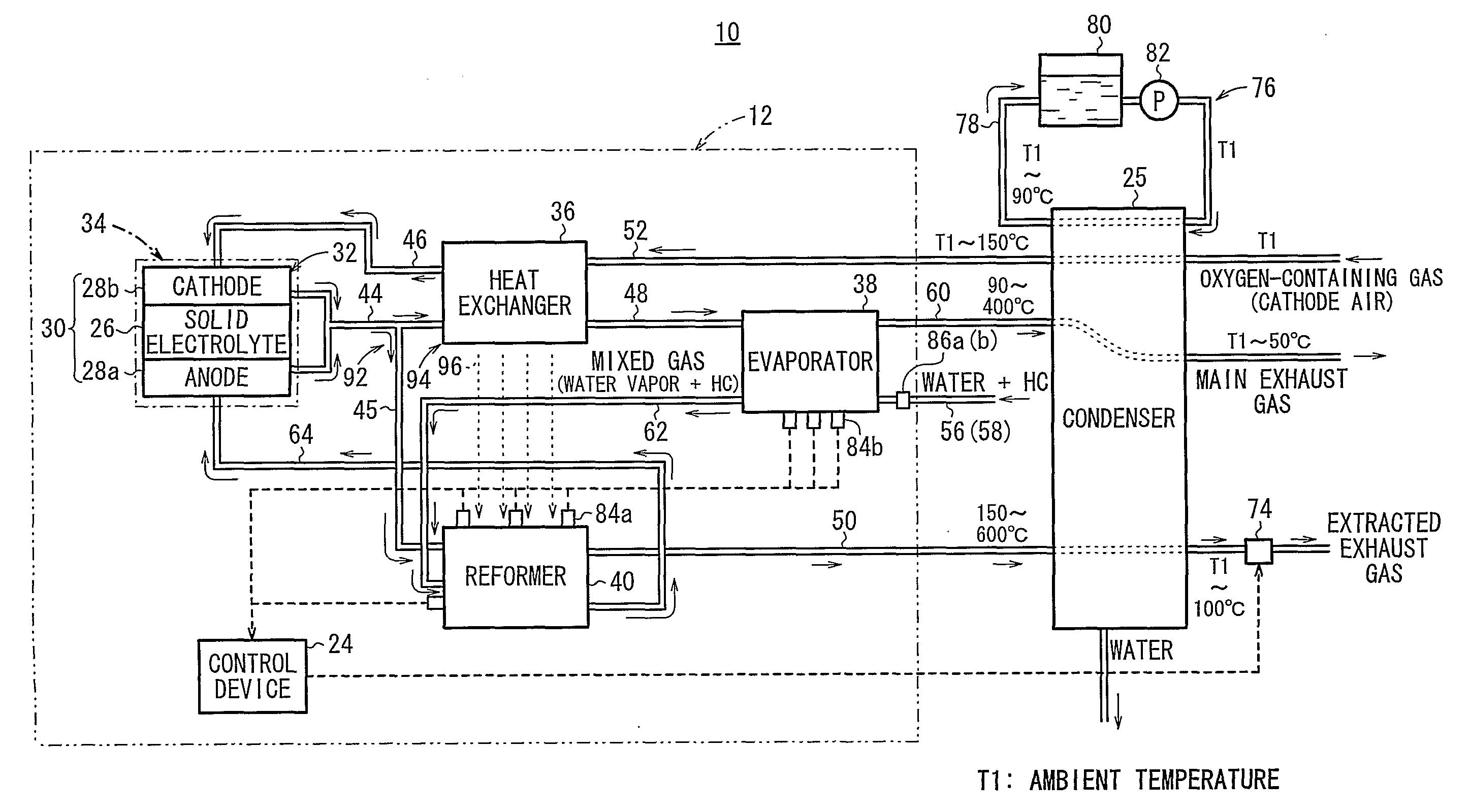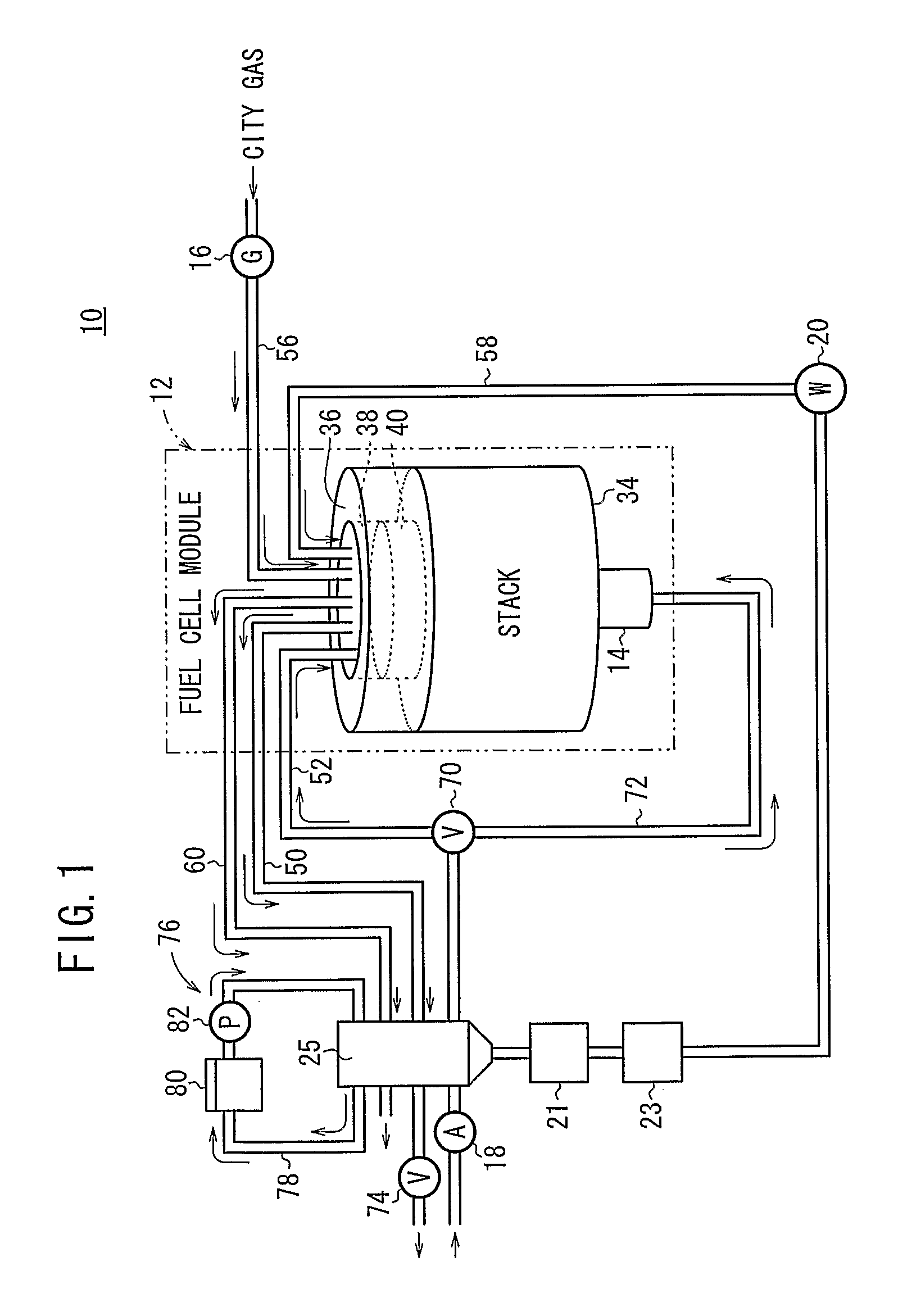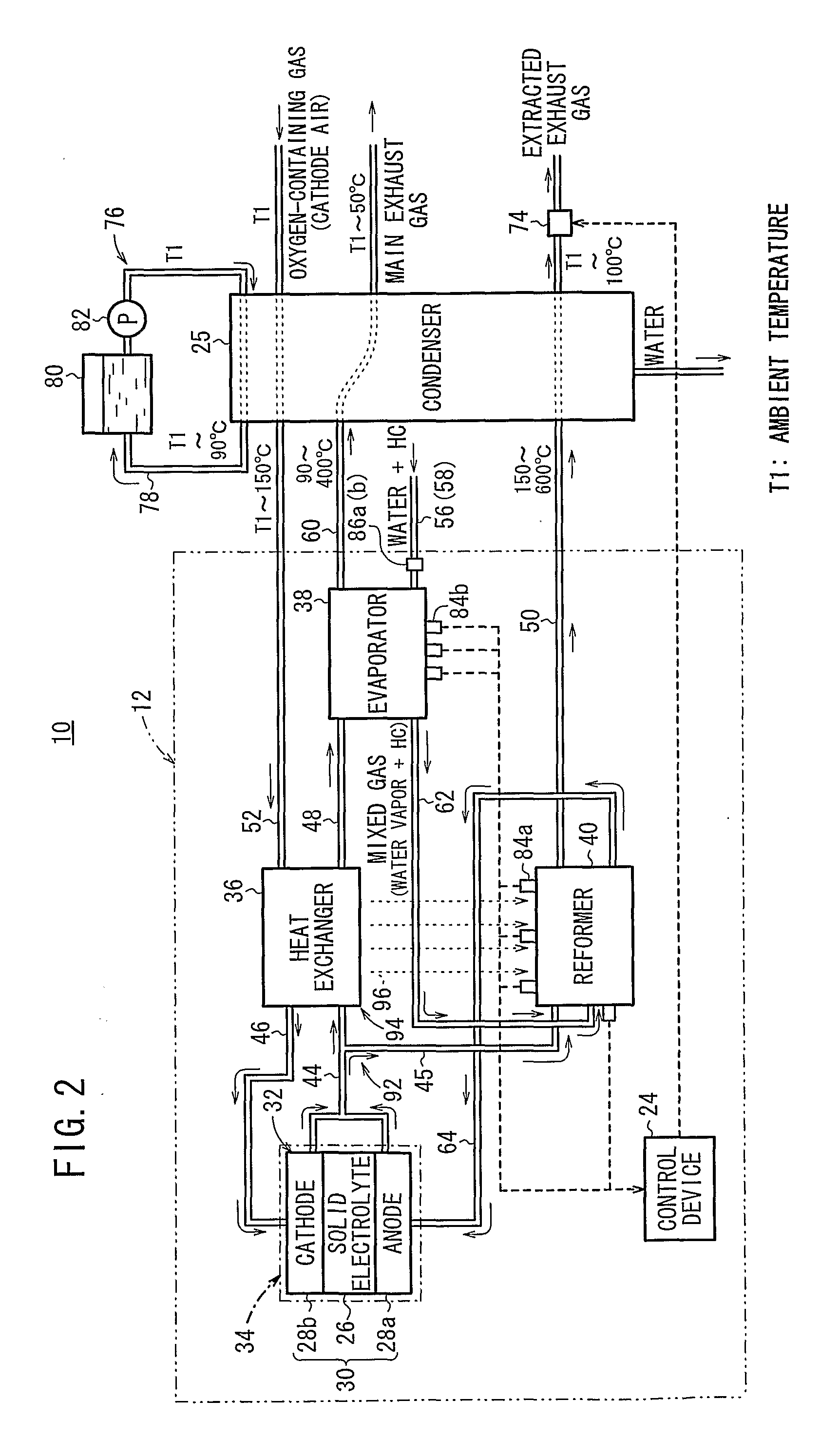Fuel cell system and method of operating the fuel cell system
a fuel cell and system technology, applied in the direction of fuel cells, solid electrolyte fuel cells, electrical apparatus, etc., can solve the problems of difficult to carry out thermal self-sustained operation, low energy efficiency, and difficult to maintain the operating temperature of the sofc in thermally self-sustained operation, so as to improve the efficiency and efficiency of waste heat utilization, and improve the collection ratio of waste heat.
- Summary
- Abstract
- Description
- Claims
- Application Information
AI Technical Summary
Benefits of technology
Problems solved by technology
Method used
Image
Examples
first embodiment
[0027]FIG. 1 is a diagram schematically showing structure of a mechanical circuit of a fuel cell system 10 according to the present invention. FIG. 2 is a diagram showing a gas extraction circuit of the fuel cell system 10. FIG. 3 is a circuit diagram showing the fuel cell system 10.
[0028]The fuel cell system 10 is used in various applications, including stationary and mobile applications. For example, the fuel cell system 10 is mounted on a vehicle. The fuel cell system 10 includes a fuel cell module 12 for generating electrical energy in power generation by electrochemical reactions of a fuel gas (hydrogen gas) and an oxygen-containing gas (air), a combustor (e.g., torch heater) 14 for raising the temperature of the fuel cell module 12, a fuel gas supply apparatus (including a fuel gas pump) 16 for supplying a raw fuel (e.g., city gas) to the fuel cell module 12, an oxygen-containing gas supply apparatus (including an air pump) 18 for supplying an oxygen-containing gas to the fuel...
third embodiment
[0071]FIG. 7 is a diagram schematically showing a gas extraction circuit of a fuel cell system 120 according to the present invention.
[0072]In the fuel cell system 120, instead of the second exhaust gas channel 48, a second exhaust gas channel 122 is connected to the heat exchanger 36. The second exhaust gas channel 122 is connected to the main exhaust pipe 60. In the reformer 40, an exhaust gas channel 124 is provided at a position corresponding to the outlet side of the branch exhaust gas channel 45. The exhaust gas channel 124 is connected to the evaporator 38, and functions as a channel for supplying the exhaust gas to the evaporator 38 as a heat source for evaporating water.
[0073]In the third embodiment, the evaporator 38 supplies the mixed fuel to the reformer 40, and the exhaust gas discharged from the reformer 40 is supplied to the evaporator 38 as the heat medium for evaporating the water. Therefore, the operation condition values (temperature condition values) of the evapo...
PUM
 Login to View More
Login to View More Abstract
Description
Claims
Application Information
 Login to View More
Login to View More - R&D
- Intellectual Property
- Life Sciences
- Materials
- Tech Scout
- Unparalleled Data Quality
- Higher Quality Content
- 60% Fewer Hallucinations
Browse by: Latest US Patents, China's latest patents, Technical Efficacy Thesaurus, Application Domain, Technology Topic, Popular Technical Reports.
© 2025 PatSnap. All rights reserved.Legal|Privacy policy|Modern Slavery Act Transparency Statement|Sitemap|About US| Contact US: help@patsnap.com



